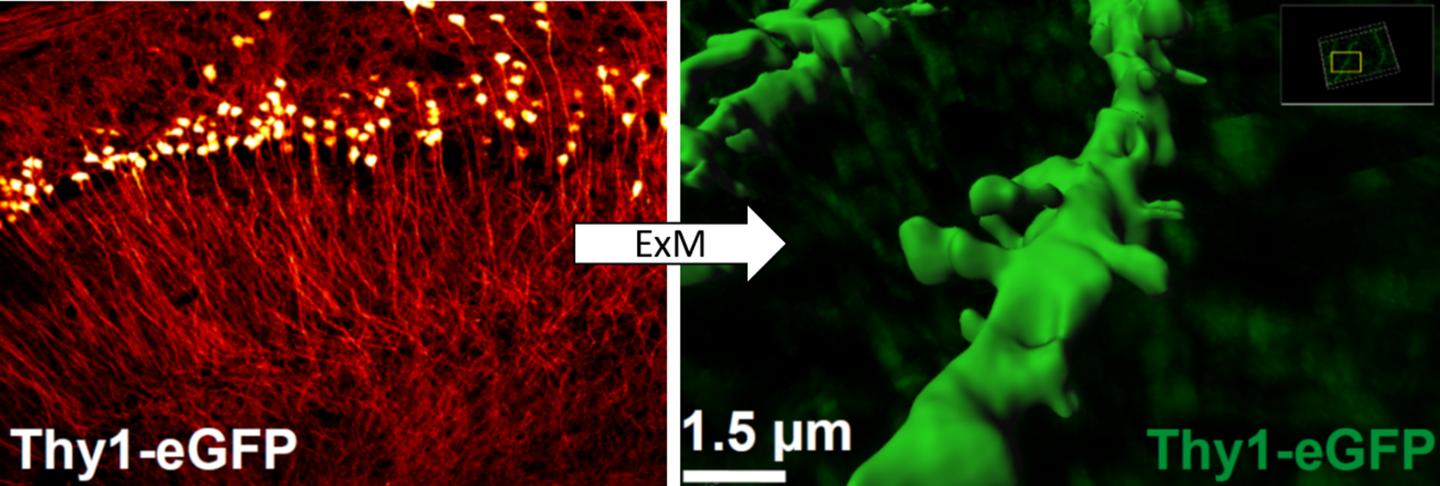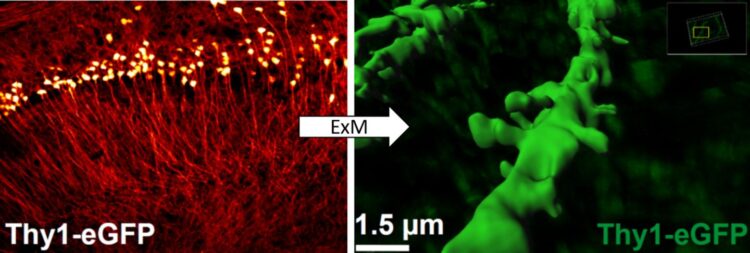
Credit: (Pictures: Team Markus Sauer / University of Wuerzburg)
In the synapses of nerve cells (neurons) there are hundreds of specialized proteins that are important for the functioning of the nervous system. If something goes wrong here, neurological or psychiatric diseases can be the result – Alzheimer’s and Parkinson’s, depression and schizophrenia are just a few of them.
Neurobiological researchers would therefore like to know where exactly these proteins are located in the synapses and what interactions they have with other molecules. However, there is one hurdle to overcome: “Even with the best super-resolution microscopy techniques, we are still unable to visualize the proteins individually with a spatial resolution of a few nanometers,” says Professor Markus Sauer. The expert in super-resolution microscopy heads the Chair of Biotechnology and Biophysics at Julius-Maximilians-Universität Würzburg (JMU) in Bavaria, Germany.
Sauer now wants to overcome this hurdle together with two other experts in super-resolution microscopy: Prof. Silvio Rizzoli from the University Medicine Göttingen (Germany), a synapse physiologist, and physicist and biotechnologist Edward S. Boyden from the Massachusetts Institute of Technology (USA).
Funding from the European Research Council
The three experts have now successfully raised funding for their project: The European Research Council (ERC) supports their project “Ultraresolution” with an ERC Synergy Grant of eleven million Euros. Approximately 4.4 million of the funds will go to JMU.
This was announced by the ERC on November 5, 2020. The project starts in June 2021 with a duration of six years. The funds will be used for postdocs and doctoral students and for a new light-sheet microscope.
Aims of the ERC project “Ultraresolution”
The researchers want to understand how key components of the synapses are organized in both healthy and diseased organisms. They want to develop standardized diagnostic tests that are suitable for routine examinations of tissue samples. In addition, they want to keep their super-resolution microscopy techniques simple enough to be used in any biomedical laboratory.
In order to make individual synapse proteins visible, the scientists want to improve the most powerful microscopy techniques available to date to enable images with a resolution of one to five nanometers. Currently, “only” 20 to 30 nanometers are possible; individual proteins are three to seven nanometers in size.
In the project, the team combines expansion microscopy (ExM) with the single-molecule-sensitive super-resolution microscopy method dSTORM to significantly improve microscopic resolution.
Unique expertise combined
“None of our teams can achieve this goal on their own, and there is currently no other research group in the world besides us that has the expertise needed to achieve fluorescence imaging with nanometer structural resolution”. With this statement, Sauer makes clear what a great deal of expert knowledge comes together in the ERC project “Ultraresolution”.
All participants are experts in the super-resolution microscopy techniques STED (Stimulated Emission Depletion), dSTORM (Direct Stochastic Optical Reconstruction Microscopy) and ExM (Expansion Microscopy). Their teams have developed these techniques significantly in recent years.
###
Media Contact
Prof. Dr. Markus Sauer
[email protected]
Original Source
https:/





